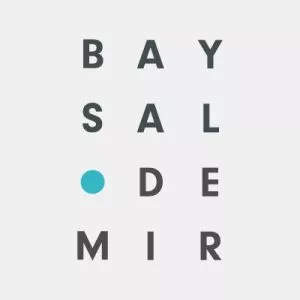This paper was prepared due to the rise of COVID-19 cases in the public and especially in workplaces, starting from July 2022. It was prepared in accordance with the prevailing regulations and precautions at the date of 22 July 2022.
1) What to do when a worker in the workplace has COVID-19?
- In case there is a worker potentially infected with SARS-CoV-2
(COVID-19) in the workplace, the worker needs to be immediately
isolated from the other workers and precautions determined by the
Turkish Ministry of Health in "Current Isolation and
Quarantine Practices Regarding COVID-19"
("Guide") need to be followed.
- According to the guide, people who show symptoms should be
isolated for 7 days starting from the day symptoms occur; and
people who do not show symptoms should be isolated for 7 days after
samples for the first PCR test are collected. In this regard,
workers that are suspected to have COVID-19, should not work in the
workplace where they have the possibility of contact with other
workers or third persons.
- According to the precautions set forth by the Ministry of
Health in the Guide, people with no symptoms or with mild symptoms
who do not have a fever without the use of an antipyretic can end
their isolation without getting a PCR test done. Accordingly,
workers whose isolation ends, can go back to working in the
workplace after the seven days.
- As stated by the Ministry of Health, workers who go back to the workplace should wear masks and pay maximum attention to social distance for minimum 10 days even after the isolation period ends, due to partial risk and in order to protect other workers and third persons. If possible, the workplace doctor should brief these workers and supervise the same to comply with said precautions.
2) What to do about people with high risk (close) contact with COVID-19 in the workplace?
The Ministry of Health provides two different practices regarding people with high risk (close contact) of COVID-19 in the Guide.
- The first practice concerns people who had the booster
vaccination and people who had COVID-19 in the past 3 months. If
the worker fits either one of these categories, they do not need to
be quarantined upon close contact with COVID-19, they can go on
with their daily lives if they comply with protective measures
(masks, social distance, hygiene) and pay attention to their
symptoms. According to the Guide, due to partial risk, these people
should wear masks and pay attention to social distance for minimum
10 days even though they are not quarantined. For this reason, it
is important that they are briefed by the workplace doctor and
their compliance to the measures is supervised.
- The second practice concerns people who are not vaccinated or
who did not get a booster shot or who did not have COVID-19 in the
last 3 months. If these people contact COVID-19, the Ministry of
Health suggests a 7 day quarantine period. According to the guide,
if they do not show symptoms at the end of the 7 day period,
quarantine can end without a need for a PCR test. And if a symptom
develops during the quarantine, a PCR test needs to be done on the
day the symptom becomes apparent. People in the second group,
should wear masks and pay maximum attention to social distance for
minimum 10 days even after the quarantine period of 7 days comes to
an end, due to partial risk. For this reason, it is important that
they are briefed by the workplace doctor and their compliance to
the measures is supervised. It would be the right thing to do to
assure occupational health and safety, for the people in the second
group to not work at places where they can possibly come into
contact with the other workers and third persons, when the health
and safety of the other workers and third persons are taken into
account.
- In cases where isolation and quarantine are not mandatory and
the Ministry of Health suggests only wearing masks and keeping
social distance, it would be appropriate for the worker to work
remotely in the relevant period of time, if possible.
- It would be helpful for the workplace doctor and authorized representatives of the employer to make briefings and to repeat / to update information regarding booster vaccination shots and precautions aimed at preventing the disease, in order to minimize the risks caused by COVID-19.
3) Does the employer pay compensation for days where the worker does not work due to COVID-19?
The ground rule in cases where the worker does not work due to a sickness (on sick leave) is making of payment by the social security system for that time period. In accordance, the obligation of the employer to pay the employee's wages ceases to exist on the days where the worker is on sick leave.
Provided that the workers condition is documented by a health report from a medical doctor or a health committee authorized by the Social Security Institution ("SSI"), a temporary incapacity benefit is paid to the worker by the Institution. However, according to the 5510 numbered Social Insurance and Universal Health Insurance Law Art. 18/1/b, this benefit starts from the 3rd day of the rest report. For white collar workers that are remunerated based on fixed monthly wages, a two-day wage for each sick leave period will be paid by the employer; but for the workers that are remunerated based on hourly or daily wages, unless the collective bargaining agreement or the labor contract states otherwise, this two-day wage will not be paid to the worker.
These principles are applicable to cases where a health report is received for COVID-19. Therefore, a 2 day wage will be paid to the white collar workers for the period they are on sick leave, but a wage will not be paid to the blue collar workers. For periods exceeding 2 days, the Social Security Institution pays an incapacity benefit to the workers on sick leave. In addition, if there is a difference between the incapacity benefit and the fixed wage for white-collar workers working on a fixed wage, this difference will be paid by the employer.
If the worker without a health report who works in accordance with the Ministry of Health's precautions, cannot perform their job, Article 40 of the Labor Law needs to be applied. According to this article, a worker who cannot work due to mandatory reasons, needs to be paid half of their wage for each day up to a week during this waiting period. In this regard, the employer needs to pay half wage to the workers who do not have a health report but cannot work due to isolation or quarantine, for each day they are unable to work (up to a week).
The content of this article is intended to provide a general guide to the subject matter. Specialist advice should be sought about your specific circumstances.


